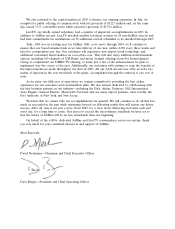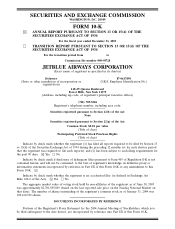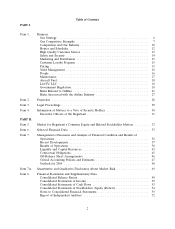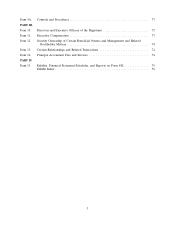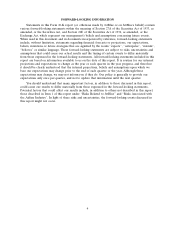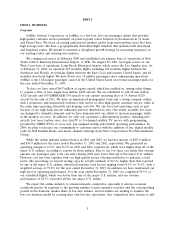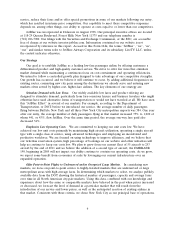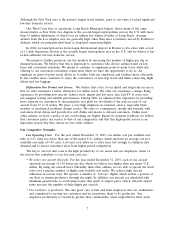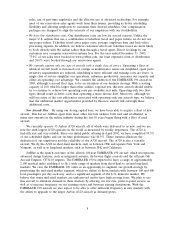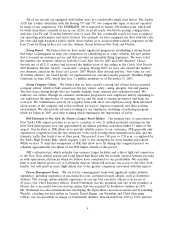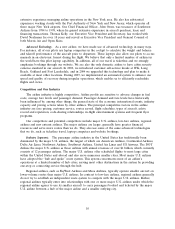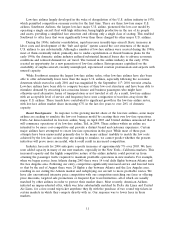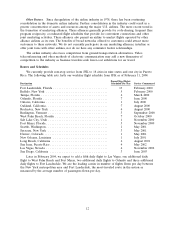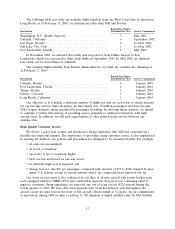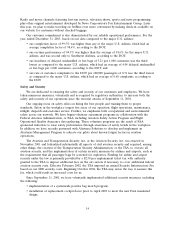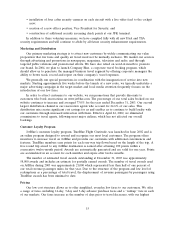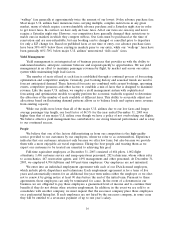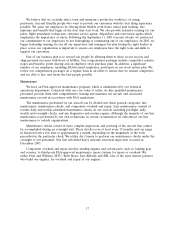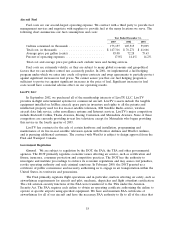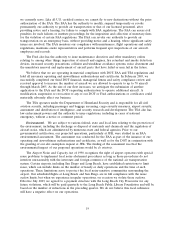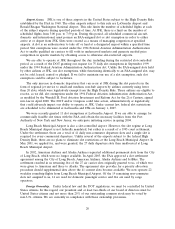JetBlue Airlines 2003 Annual Report Download - page 13
Download and view the complete annual report
Please find page 13 of the 2003 JetBlue Airlines annual report below. You can navigate through the pages in the report by either clicking on the pages listed below, or by using the keyword search tool below to find specific information within the annual report.extensive experience managing airline operations in the New York area. He also has substantial
experience working closely with the Port Authority of New York and New Jersey, which operates all
three major New York airports. Our Chief Financial Officer, John Owen, was treasurer of Southwest
Airlines from 1984 to 1998, where he gained extensive experience in aircraft purchase, lease and
financing transactions. Thomas Kelly, our Executive Vice President and Secretary, has worked with
David Neeleman for over 18 years and served as Executive Vice President and General Counsel of
both Morris Air and Open Skies.
Advanced Technology. As a new airline, we have made use of advanced technology in many ways.
For instance, all of our pilots use laptop computers in the cockpit to calculate the weight and balance
and takeoff performance of the aircraft prior to departure. These laptops also allow our pilots to access
manuals in an electronic format during the flight. We believe that only a limited number of airlines in
the world have this pilot laptop capability. In addition, all of our travel is ticketless and we strongly
emphasize bookings through our website. We are also the only domestic airline to have cabin security
cameras standard in our aircraft. In 2002, we introduced customer self-service kiosks at JFK, Long
Beach, Oakland and Fort Lauderdale, and in 2004 we upgraded this technology and plan to make it
available at most other locations. During 2003, we implemented an automated system to enhance our
speed and quality of recovery during irregular operations, which enables us to efficiently reschedule
flights and crews.
Competition and Our Industry
The airline industry is highly competitive. Airline profits are sensitive to adverse changes in fuel
costs, average fare levels and passenger demand. Passenger demand and fare levels have historically
been influenced by, among other things, the general state of the economy, international events, industry
capacity and pricing actions taken by other airlines. The principal competitive factors in the airline
industry are fare pricing, customer service, routes served, flight schedules, types of aircraft, safety
record and reputation, code-sharing relationships, in-flight entertainment systems and frequent flyer
programs.
Our competitors and potential competitors include major U.S. airlines, low-fare airlines, regional
airlines and new entrant airlines. The major airlines are larger, generally have greater financial
resources and serve more routes than we do. They also use some of the same advanced technologies
that we do, such as ticketless travel, laptop computers and website bookings.
Industry Segments. The passenger airline industry in the United States has traditionally been
dominated by the major U.S. airlines, the largest of which are American Airlines, Continental Airlines,
Delta Air Lines, Northwest Airlines, Southwest Airlines, United Air Lines and US Airways. The DOT
defines the major U.S. airlines as those airlines with annual revenues of over $1 billion, which currently
consists of 12 passenger airlines. The major U.S. airlines offer scheduled flights to most large cities
within the United States and abroad and also serve numerous smaller cities. Most major U.S. airlines
have adopted the ‘‘hub and spoke’’ route system. This system concentrates most of an airline’s
operations at a limited number of hub cities, serving most other destinations in the system by providing
one-stop or connecting service through the hub.
Regional airlines, such as SkyWest Airlines and Mesa Airlines, typically operate smaller aircraft on
lower-volume routes than major U.S. airlines. In contrast to low-fare airlines, regional airlines generally
do not try to establish an independent route system to compete with the major U.S. airlines. Rather,
regional airlines typically enter into relationships with one or more major U.S. airlines under which the
regional airline agrees to use its smaller aircraft to carry passengers booked and ticketed by the major
U.S. airline between a hub of the major airline and a smaller outlying city.
10


